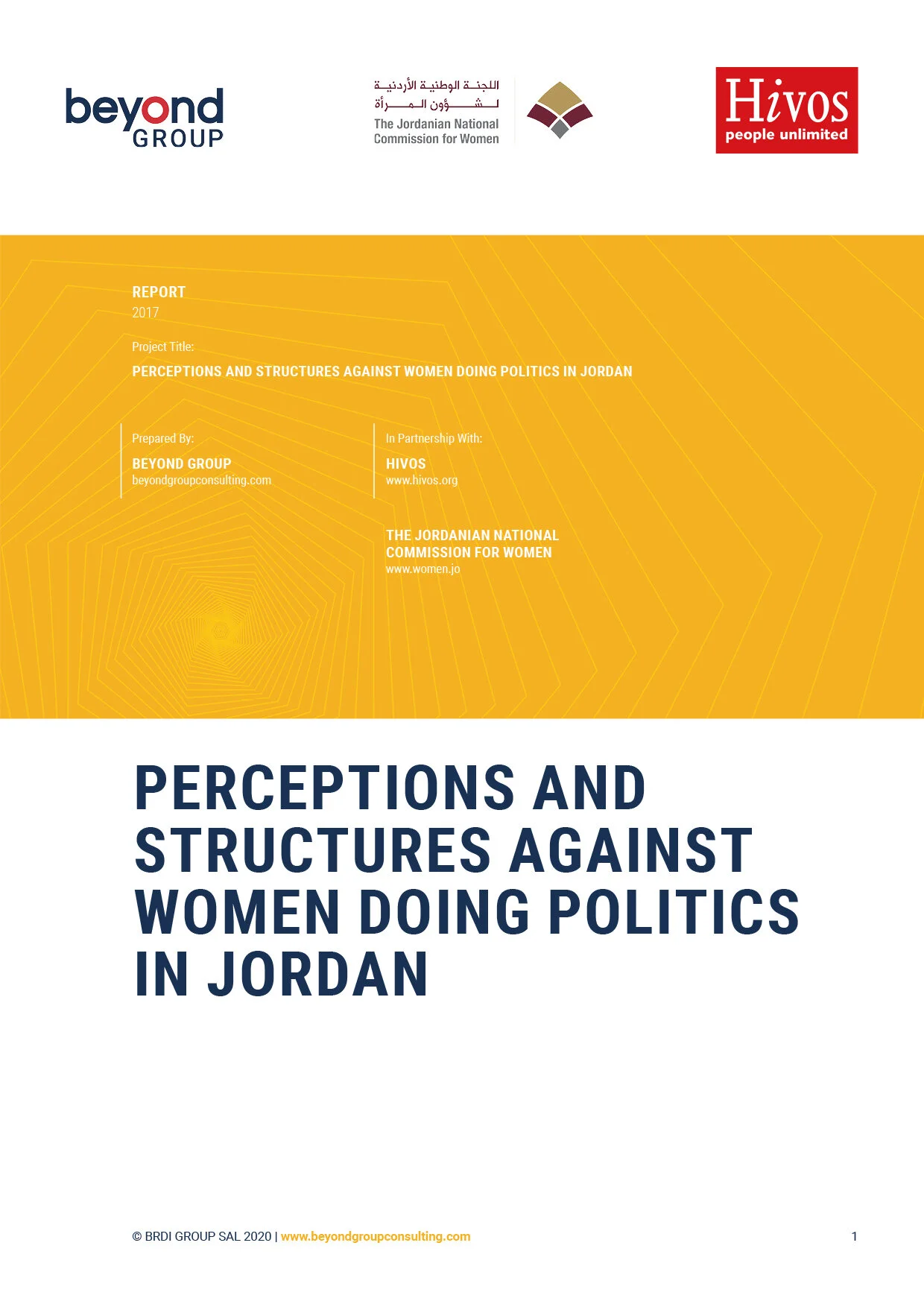Perceptions And Structures Against Women Doing Politics In Jordan
Developed By:
Beyond Group
In Partnership With:
HIVOS
Jordanian National Commission for Women
2017
Perceptions And Structures Against Women Doing Politics In Jordan
The following report is the result of seven months of data collection in Jordan, within WE4L (Women Empowered for Leadership) programme that is funded through the Dutch Ministry of Foreign Affairs: Funding Leadership and Opportunities for Women (FLOW), and implemented by Hivos, together with local partners in five countries (Lebanon, Jordan, Malawi, Zambia, and Zimbabwe).
The research focused on identifying, analysing, and documenting structural, cultural, and political challenges hindering women’s political participation in political parties, unions, and government institutions in Jordan.
In 2016, King Abdullah II shared a discussion paper where he addressed his people on the subject of the secular state entitled “ The Rule of Law at the Basis of a Secular State” which explained what the rule of law meant and what it would mean for Jordan and Jordanians starting with “ The secular state protects the rights of women and minorities”.
Jordan ranks 134th out of 144 countries on the 2016 Gender Gap report, with only 12 out of 88 Upper House positions occupied by women and no female heads of state. Women in Jordan received political empowerment with only 14% of parliamentary seats and 7% of ministerial positions occupied by women (11 seats out of 89 Ministerial positions).
In 2003, King Abdallah II appointed 8 women to the 55-seat upper house of the National Assembly, yet the formal participation of women in politics (political parties, unions, different government branches, decision-making positions, etc) remains greatly undervalued and understudied.
This report looks at the different challenges hindering women’s participation in politics in Jordan, and seeks to highlight the status quo of women’s participation in the different political groups in seven chapters.

